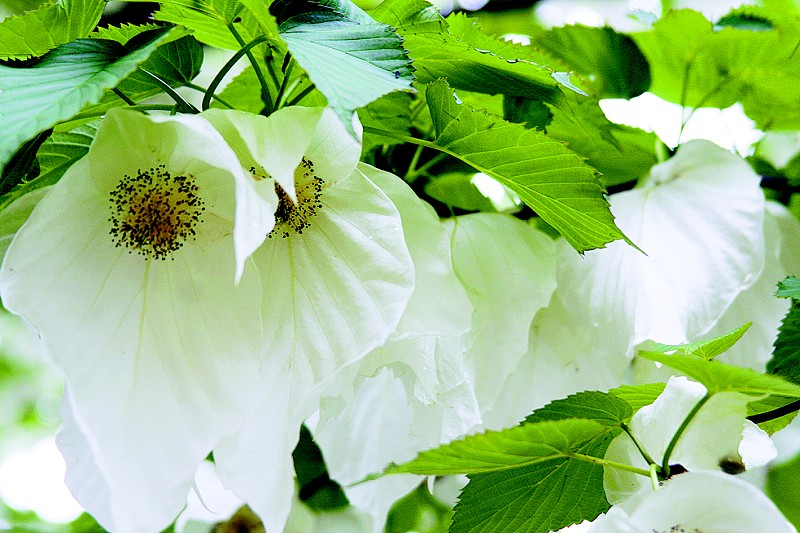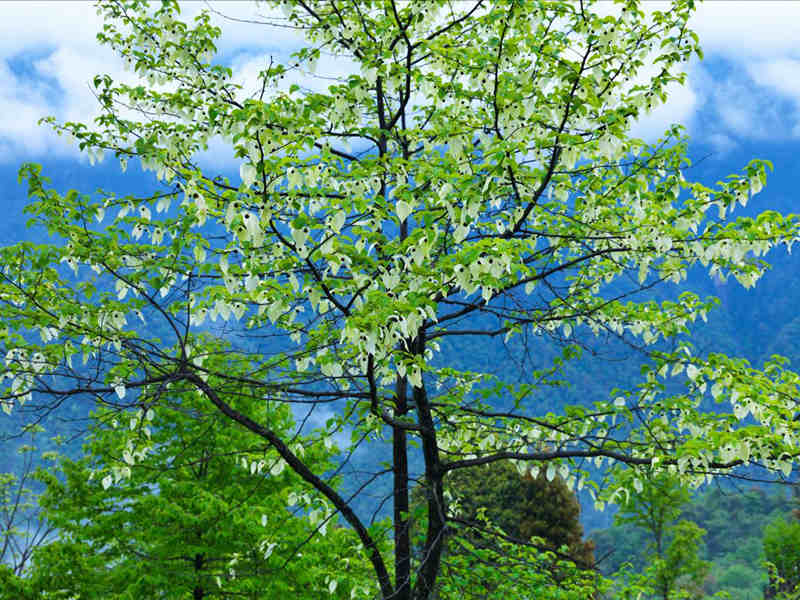The Dove Tree,the Living Fossil PlantThe
3 min readDove Tree(Davidia involucrata)is amedium-sized deciduous tree,usually placed in thetupelo family(Nyssaceae),but is sometimes included(with the tupelos)in the dogwood family(Cornaceae),and by yet other given family status of its own,as Davidiaceae.It is also known as the Handkerchief tree or Pocket-handkerchief tree.The tree isnative to central China,from Hubei to southern Gansu,south to Guizhou,Sichuan and Yunnan.

The Dove Tree is the only member of its genus,but there are two varieties differing slightlyin their leaves,Davidia involucrata var.involucrata,which has the leaves thinly pubescent(short-haired)on the underside,and Davidia involucrata var.vilmoriniana,with glabrous(hairless)leaves.Some botanists treat them as distinct species,with good reason as the two taxahave differing chromosome numbers so that they are unable to produce fertile hybrid offspring.
It is a moderately fast-growing tree,growing to about 20-25 m in height,with alternatecordate leaves resembling those of a linden in appearance,except that they are symmetrical,andlacking the lop-sided base typical of linden leaves;the leaves are mostly 10-20 cm long and 7-15cm wide and are ovate or heart-shaped.

The Dove Tree is best known for its flowers.These form a tight cluster about 1-2 cmacross,reddish in colour,each flower head with a pair of large(12-25 cm),pure white bracts atthe base performing the function of petals.These hang in long rows beneath the level branches.The flowers are at their best in late May.On a breezy day,the bracts flutter in the wind likewhite doves or pinched handkerchiets,hence the English names for this tree.
The fruit is a very hard nut about 3 cm long surrounded by a green husk about 4 cm long by3 cm wide,pendulous on a 10 cm stalk.The nut contains 3-6 seeds.
The species was introduced from China to Europe and North America in 1904,and is apopular ornamental tree in larger gardens.Most trees in cultivation are var.vilmoriniana,whichhas proved much better to adapt to the chimauic conditions in Europe and North America.
The genus Davidia is named after Father Armand David(1826-1900),(“Pere David”).a French Vincentian missionary and keen naturalist who lived in China,and who is alsocommemorated for his finding of Chinese White Pine Pinus armandii and Père David’s Deer.He was also the first westerner to describe another rare Chinese endemic,the Giant panda(Ailuropoda melanoleuca).Although it was David who first described the tree in 1905,a singletree found at over 2,000 metres altitude,his specimens were lost in a boat wreck on the HanRiver rapids.The Scottish plant hunter Augustine Henry again found a single tree,this time inthe Yangtse Ichang gorges and sent the first specimen to Kew Gardens.Plant collector ErnestHenry Wilson was employed by Sir Harry Veitch to find Henry’s tree but arrived to find that ithad been felled for building purposes;however he later found a grove of the trees overhanging asheer drop.Wilson too had his boat wrecked but managed to save his Davidia specimens.








